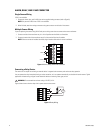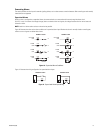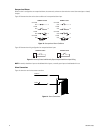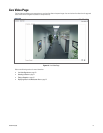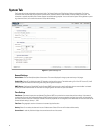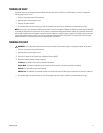C2953M-B (10/09) 21
SELECTING A STREAM
1. Click the Select Stream button.
2. Select one of the following stream options from the Select Stream page:
Primary Stream: To select this stream, click the button next to Primary Stream.
Secondary Stream: To select this stream, click the button next to Secondary Stream.
QuickView Stream: To select this stream, click the button next to QuickView Stream.
NOTES:
• If the secondary stream has not been configured, only Primary Stream and QuickView Stream are available.
• The default names for the streams are Primary Stream and Secondary Stream; however, if these stream names have been changed,
the new names will replace the default names (Primary Stream and Secondary Stream) on the Select Stream page.
3. Select one of the following options to adjust the stream settings:
MPEG-4 or H.264 compression: Select the video transmission type from the Transmission drop-down menu. Available settings include
Unicast and Multicast.
JPEG compression: Select the image rate for the stream from the Image Rate drop-down menu. The available settings for the primary
and secondary streams depend on the Image Rate setting. The QuickView Stream has only two image rate settings: 2 ips and 1 ips.
4. Click the View button to save the stream settings.
Refer to the following sections for more information:
• Unicast on page 21
• Multicast on page 21
• Compression Standards on page 46
• Image Rate on page 46
UNICAST
A unicast transmission sends a separate video stream to each user that is requesting data. Although multiple users might request the same data
from the camera at the same time, duplicate video streams are transmitted to each user. Every unicast user that connects to the camera
consumes additional processing power, which limits the number of simultaneous users who can access the camera.
The camera supports a maximum of 20 simultaneous users.
MULTICAST
A multicast transmission sends data to multiple users at the same time using one transmission stream. Each multicast user that connects to the
camera consumes no additional processing power; therefore, multicast video streams can be sent to an unlimited number of simultaneous users.




